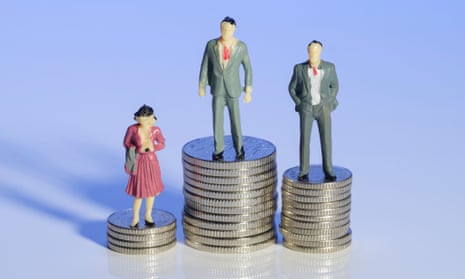Economic inequality for women costs an estimated $9tn per year in the developing world, according to a report released Friday by ActionAid, an NGO that works to reduce poverty.
A combination of low pay, low participation in the workforce and insecure employment not only drags down women’s economic opportunities, but also the global economy as a whole, the report found.
In the wake of Thomas Piketty’s runaway economic bestseller, Capital in the Twenty-First Century, the issue of wealth inequality has become a hot-button issue. It’s also a key focus of the World Economic Forum meeting in Davos, Switzerland, this week.
According to ActionAid’s report, however, the issue of income inequality is underscored by the more specific – and, arguably, more corrosive – problem of gender inequality.
Citing UN studies, the report notes that women comprise 60% of the world’s working poor, and that only about half of them participate in the labor force. To compound the problem, a 2014 World Bank report shows that, on average, women earn 10%-30% less than men for comparable work.
This gender inequality is a major part of the economic status quo worldwide, according to the ActionAid report. For example, low-paid, outsourced factory labor – a well-documented aspect of global economic inequality – is closely related to gender inequality. As a 2013 report by the International Center for Research on Women points out, 80% of garment workers (pdf) are women.
This work, which is often low-paying, insecure and subject to the vagaries of the market, both contributes to and relies upon the social, economic and political inequality of women. This inequality becomes even more pronounced in times of crises: the International Labor Organization reports, for example, that the global economic crisis widened the unemployment gap (pdf), leaving a higher percentage of women unemployed than men.
Another factor in women’s economic inequality is the fact that they take on a vastly outsized portion of unpaid, undervalued household work. From food preparation to cleaning to childcare, domestic work is rarely counted as part of labor force participation – and this disproportionately disadvantages women.
As Japanese Prime Minister Shinzo Abe found last year when he launched his “Abenomics” plan to spur the country’s economy, a big part of getting an estimated 3 million more women to participate in the Japanese workforce lay in providing subsidized, high-quality child care. “Abenomics won’t succeed without women-omics,” he stated at the time.
Unsurprisingly, gender-based economic inequality bleeds over into political and social inequality too. Lower income, unregulated and insecure work and a lack of economic security makes women more dependent and places them at greater risk of impoverishment and violence. This is particularly true in developing countries, where economic inequalities are often even more pronounced.
It’s not all bad news: the combination of more workers, more consumers, and more potential commodities could translate into economic growth, the ActionAid report suggests.
If women in developing countries were paid as much as men and had equal access to the labor market, the report calculates, they would make an extra $9tn per year. Such an economic expansion could provide an astounding boost to global markets and the world’s economy.
Admittedly, this idea is highly speculative: an influx of $9tn into the global economy would have a wide-reaching impact, affecting the cost of products, currency values, worker wages and more.
What is less speculative, however, is the impact that equal pay would have on the safety, security and position of women in the world. Power and purse strings, after all, are intimately connected, and greater economic power often directly translates into greater political and social autonomy.
The social impact hub is funded by Anglo American. All content is editorially independent except for pieces labelled ‘brought to you by’. Find out more here.

Comments (…)
Sign in or create your Guardian account to join the discussion